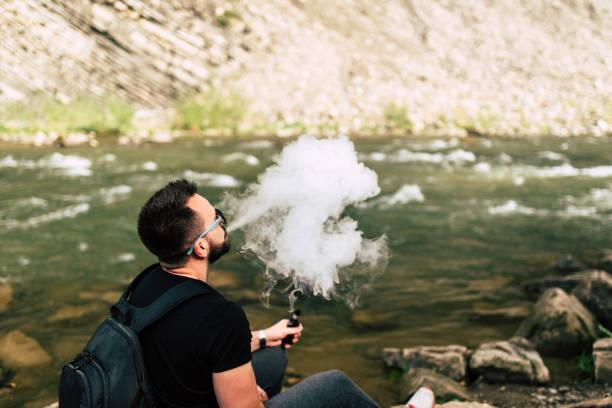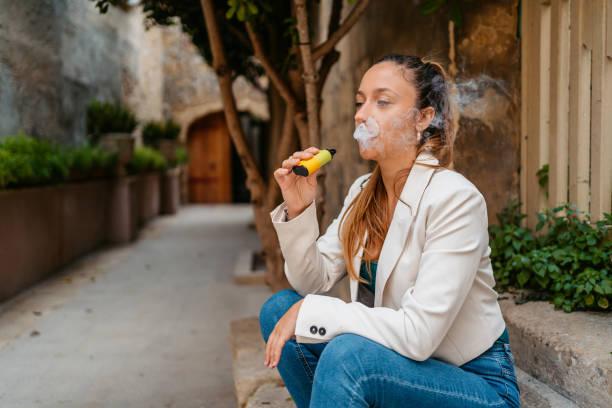Traveling with a vape can be confusing due to varying airline and airport security regulations. From TSA guidelines to international restrictions, understanding the rules about vaping devices, e-liquids, and lithium batteries is essential to ensure a hassle-free journey. This guide will help you navigate everything you need to know about carrying a vape on a plane safely and legally.
Can You Bring a Vape in Your Carry-On?

Yes, you can take a vape to the airplane in your carry-on bag but there are guidelines you have to follow. The TSA as well as the vast majority of similar bodies around the world permit the use of vaping devices in hand luggage. However, there are regulations on how the vape and most of the parts are packed.

First, all forms of e-cigarettes, vapes and any kind of battery operated vaping devices should be packed in the carry-on baggage and not in the check-in baggage. The reason for this is simple: Vapes also have lithium-ion batteries, which are a fire risk in the cargo section, according to the indictment. Because of this, it would be ideal if these devices would be operated in the cabin and this way the crew can attend to the overheating or a overall malfunctioning immediately.

The vape can be pack inside hand luggage but it has to be off and batteries have to be removed during the flight. Some carriers do not allow passengers to use their vapes or even charge them on flight or aboard a flight.
What Happens During Security Screening?

If you take a vape with you to an airport and you put the device in the carry-on luggage, then the discrete vaporizer together with the associated E-liquid will be subjected to the same treatment as your other electronics and liquids. Here’s a breakdown of what happens:

The Vape Device:
In this case security officers will request that you remove the vape from your hand luggage and place it in a bin for X-ray. Like other hardware products for instance, laptops, and larger electronics your vape should be stored differently from other items.
Batteries:
If you have other batteries for your device, they must be put into a case or at least the connection points should be covered with some type of tape. Such batteries can be accessed physically by security staff who may wish to examine these batteries more closely.
E-Liquids:
E-liquids have a restriction against them which is the 3-1-1 rule where passengers are allowed to carry up to 100 milliliters of liquid in a container which then must fit into a clear plastic bag not more than one quart. That applies both to toiletries or any other liquid substances, for that matter. Any e-liquid in a container holding more than 100 milliliters should be carried in the checked luggage base on the airline’s policy permitting the same.
Common Issues with Traveling with Vapes
The TSA permits vapes to be carried on board and there are several typical problems that people can experience.
Battery Safety Concerns
The primary issue at hand with carrying a vape on a flight is the battery, more so the lithium-ion battery. Airlines and security agencies closely control these because they can heat up and trigger a fire. That’s why you cannot pack vapes or extra batteries in your check-in luggage since the baggage is not in a controlled environment, unlike in the hold. If your battery is damaged or not packed properly, the airline may remove it or even pack it separately and you may be required to surrender it to the airline before boarding.
E-Liquid Leaks
Let me note that pressure changes during the flight influence the leakage in e-liquid containers. Leaving the vaping tanks empty when boarding is advisable, as is bringing your e-liquid in approved containers on the airplane. A large number of travelers prefer carrying their e-liquids in plastic bags to avoid a situation where they cause damage to other contents in a bag.
Restrictions in International Destinations
Many countries impose different measures when it comes to vaping. For instance some counties such as Thailand and Singapore have banned the importation and use of e cigarettes and other vaping products. In some countries vaping is perfectly legal however, there can be certain ban with regards to the type of devices or the liquids you get to carry. It’s wise to check with local vaping laws in the country you’re visiting to prevent getting caught with fines, having your vape products confiscated, or worse, arrested.
What Happens if Your Vape is Found in Checked Luggage?
It’s even worse if you take your vape inside your checked luggage, it stands a high chance to be detected during the security check. There are some instances when security officers will confiscate the device from your check in luggage before it is loaded on the plane. You may be required to pick it or will receive a notice in your luggage that it has been taken. In case batteries are found in the checked luggage, they are either seized or your baggage takes a very long time to go through the security check.
Vapes have always to be kept in hand luggage and it is forbidden to smoke them in any other way, which can lead to fines or delays, for example, in countries with more rigorous measures.
How to Pack a Vape Safely for Air Travel
Here are some tips to ensure that your vape is packed safely and complies with air travel regulations:
-
Disassemble the Device: If it is possible take out the battery from the life of the vape. This minimizes the possibility of trigger of current shocks or even short-circuiting.
-
Use a Protective Case for Batteries: Any additional batteries should be stored in an accessory protective case. In case you do not possess one, avoid touching the terminals with metal objects by using tape.
-
Empty the Tank: Avoid spills by always leaving the vape tank empty before using any other form of transport. Travel e-liquids should be stored in small and clear bottles which meet the 3-1-1 regulation.
-
Label Your Items: It is also important to properly label your vaping device and e-liquid bottle to ensure that during screening you do not mix with the other. When items to be handled are branded, security personnel reduce the chances of applying force hence dealing with them gently.
-
Keep It Easily Accessible: carry your vape and e-liquids in a place where you can reach out for the screening very quickly. However, do not put them at the bottom of the carry-on bag in case you forget them.
Can You Use a Vape on the Plane?
No, having vapes, on planes is banned completely. This comprises of smoking e cigarettes, because they produce vapor which in turn leads to setting off of the smoke detectors and alarms. As we see some of the older models may not pick on vaping smoke readily, newer models have very sensitive alarms which can easily be triggered. If passengers try to use vape on a plane then fines can be imposed or, in some cases, people are banned from airplanes.
Also, using your vape or removing the item from the carry-on luggage is generally prohibited while onboard most airlines. That would be the best way to avoid the risk of causing a fire on board by leaving the device packed until one leaves the plane and goes to either a smoking or vaping zone.
Vape Regulations by Airline and Country
The regulation of vapes varies with airlines and countries, so it’s wise to check their policies before hopping on a plane. For example:
-
United States: The TSA permits vapes in the carry-on bags but it banned from the checked bags. Almost every American airline has the same rules but using or recharging the device on the plane is strictly prohibited.
-
European Union: Laws concerning the use of e-cigarettes within the European Union largely correspond to the TSA rules, however, some states may have more rigorous proscribing of e-liquid and vaping devices.
-
Asia: Japanese laws allow the use of vaping but you have to ensure that your device and e-liquids meet the country’s standards. But Thailand and Singapore were two exceptions as they have very stringent laws regarding the import of vapes in the country.
What Should You Do Before Traveling?
If you vape and plan on traveling, here’s a checklist to follow before you head to the airport:
-
Check Airline Policies: Check whether your airline has a policy on carrying vapes and e-liquids or not and if yes then what does it allow. It is, therefore, possible to find some low-cost airlines which have stringent policies in place.
-
Research Local Laws: Find out what laws pertain to vaping before you get to your intended location from your research on the topic. This is especially so if you are planning to visit countries with severe vaping restrictions or having a total vaping ban.
-
Pack Your Vape Properly: Vape will be carried in the carry on and must be stored and transported in a manner that does not violate airport security regulations. To your vaping device: remove the vaporizer tank and expel its content while for your e-liquids, pack them adhering to TSA’s 3-1-1 regulation that allow passengers to carry up to three ounces of liquids in one sealed container.
-
Be Aware of Your Device: Always have your vaporizer switched off and kindly make sure it doesn’t move an inch during the flight.
Conclusion
It is perfectly acceptable to have a vape in your hand luggage, but like everything else, there are legal regulations that must be adhered to. Preparing to prevent problems is the best way to approach traveling with a vape; ranging from making sure that your vape is packaged safely, and switched off to recognizing the liquid limitations for e-jouices. Remember that vapes must be stored in carry-on baggage because of the fire hazards connected with lithium batteries, and it is not allowed to use your device on the plane.
Check the regulations of the country you are travelling to, your specific airline in advance, make proper arrangements to pack vape safely and also consider TSA regulations on vape while travelling. This, in return, will help avoid time wastage, penalties, or confiscation and contribute to the safety of the travelers ion the vehicle.
Summary
While no one has a problem with you carrying a vaporizer in your carry-on bag, there are strict guidelines to be followed to serve the purpose of safety and aviation rules. Make sure that your vape is taken apart, batteries kept secure, and e-liquids do not violate liquid regulations. E-cigarettes should never be packed in a checked bag and may not be used or charged on the airplane. It is only by researching local laws and airline policies that you can travel without worry that your vape and its constituent parts are packed safely and legally.

